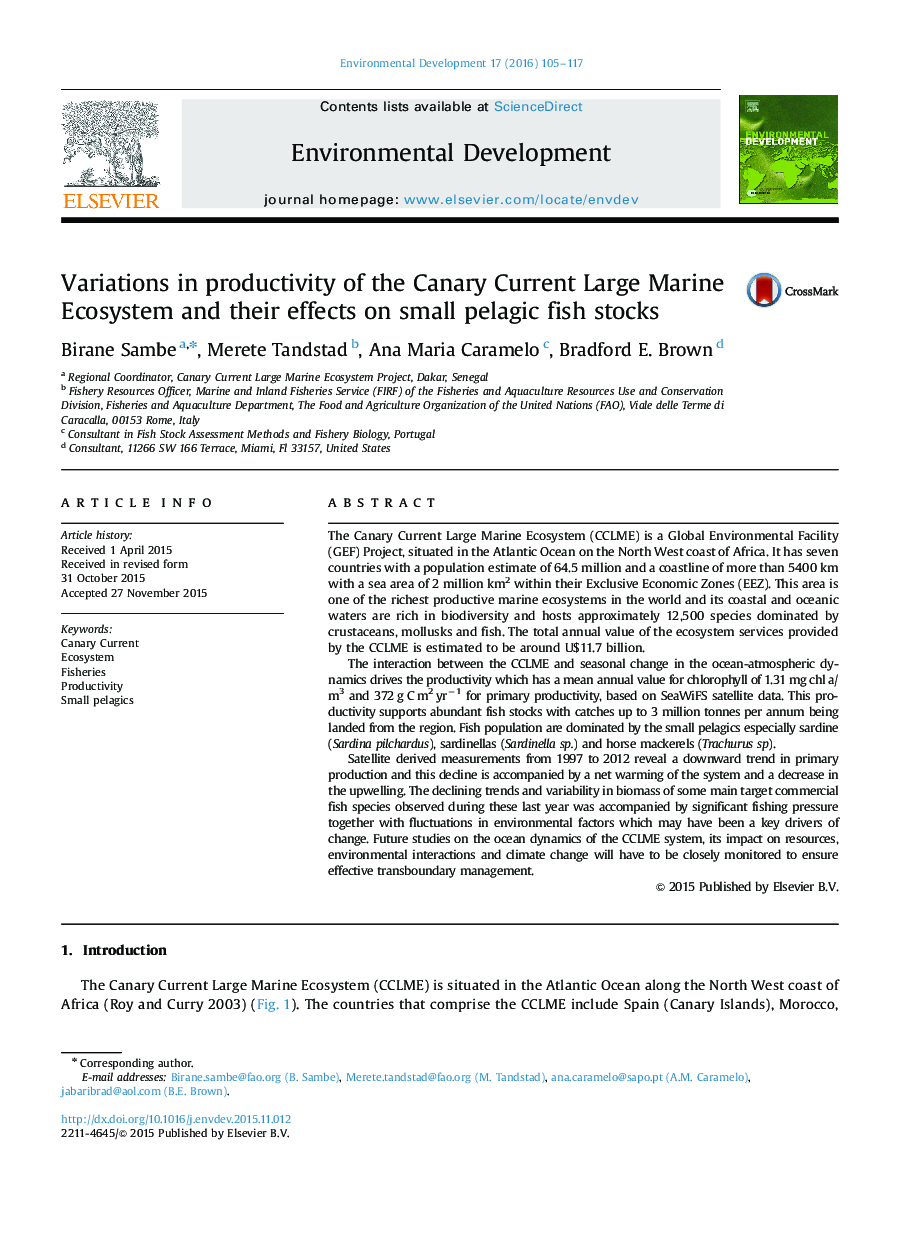| کد مقاله | کد نشریه | سال انتشار | مقاله انگلیسی | نسخه تمام متن |
|---|---|---|---|---|
| 4391378 | 1305318 | 2016 | 13 صفحه PDF | دانلود رایگان |
• Biodiversity in CCLME is 12 500 species (arthropods, mollusks and chordate).
• Annual value of the Ecosystem Services by ecosystems is 117 billion US$.
• The CCLME have 372 g C m2yr-1 for primary productivity.
• Productivity permits total catches which can reach 3,000,000 tons.
• Variability of biomass results from fishing pressure and environmental change.
The Canary Current Large Marine Ecosystem (CCLME) is a Global Environmental Facility (GEF) Project, situated in the Atlantic Ocean on the North West coast of Africa. It has seven countries with a population estimate of 64.5 million and a coastline of more than 5400 km with a sea area of 2 million km2 within their Exclusive Economic Zones (EEZ). This area is one of the richest productive marine ecosystems in the world and its coastal and oceanic waters are rich in biodiversity and hosts approximately 12,500 species dominated by crustaceans, mollusks and fish. The total annual value of the ecosystem services provided by the CCLME is estimated to be around U$11.7 billion.The interaction between the CCLME and seasonal change in the ocean-atmospheric dynamics drives the productivity which has a mean annual value for chlorophyll of 1.31 mg chl a/m3 and 372 g C m2 yr−1 for primary productivity, based on SeaWiFS satellite data. This productivity supports abundant fish stocks with catches up to 3 million tonnes per annum being landed from the region. Fish population are dominated by the small pelagics especially sardine (Sardina pilchardus), sardinellas (Sardinella sp.) and horse mackerels (Trachurus sp).Satellite derived measurements from 1997 to 2012 reveal a downward trend in primary production and this decline is accompanied by a net warming of the system and a decrease in the upwelling. The declining trends and variability in biomass of some main target commercial fish species observed during these last year was accompanied by significant fishing pressure together with fluctuations in environmental factors which may have been a key drivers of change. Future studies on the ocean dynamics of the CCLME system, its impact on resources, environmental interactions and climate change will have to be closely monitored to ensure effective transboundary management.
Journal: Environmental Development - Volume 17, Supplement 1, January 2016, Pages 105–117
